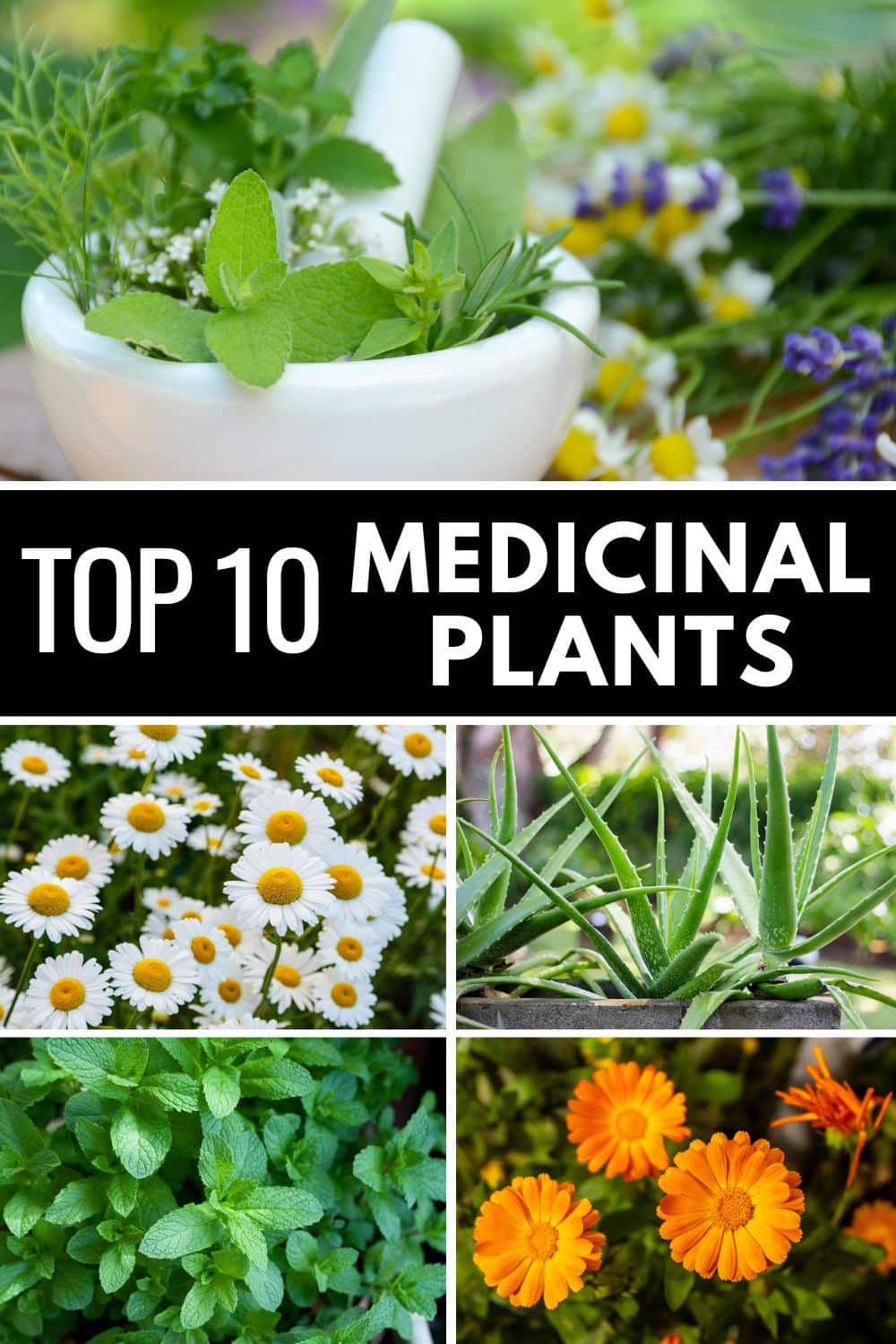This list of top 10 medicinal plants will make blending your love for home gardening and natural home remedies much easier.
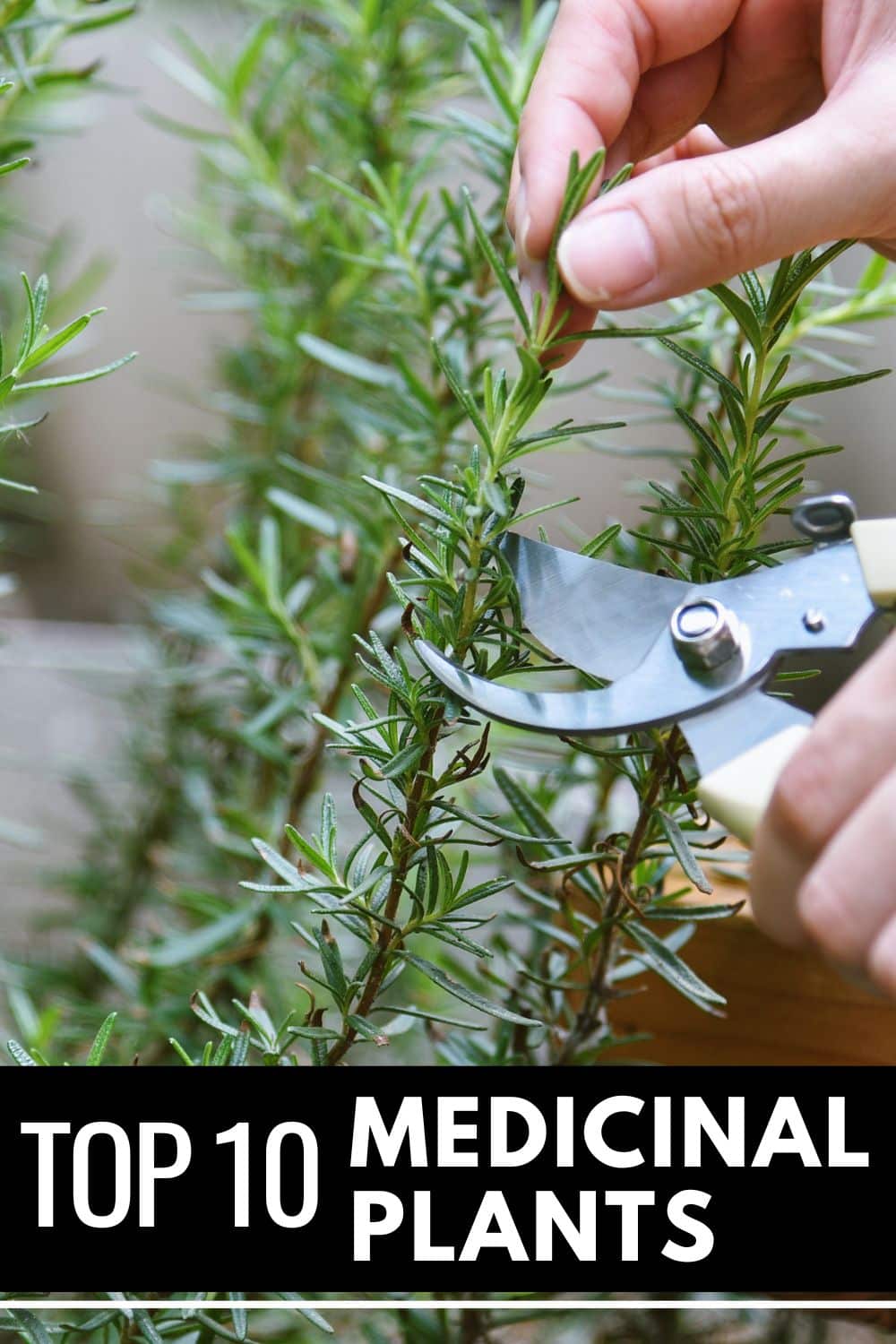
The use of medicinal plants and medicinal herbs can be found in many cultures worldwide. With records dating thousands of years ago, we know that there are tons of flowering plants and other botanical wonders that promote overall health and healing.
You’ve come to the right place if you’re looking to start a home garden that’s geared toward making natural home remedies. Keep reading to discover our top 10 medicinal plants and herbs you can plant in your lovely home!
Jump to:
Top 10 Medicinal Plants for Your Home Garden
Looking for something specific? Check out our list of top medicinal plants with healing properties that can help alleviate or manage your health concerns.
1. Calendula
Calendula petals are often used in skincare products such as creams, lotions, balms, and salves. The petals are known for their anti-inflammatory, antibacterial, and soothing properties, making them beneficial for sensitive or irritated skin.
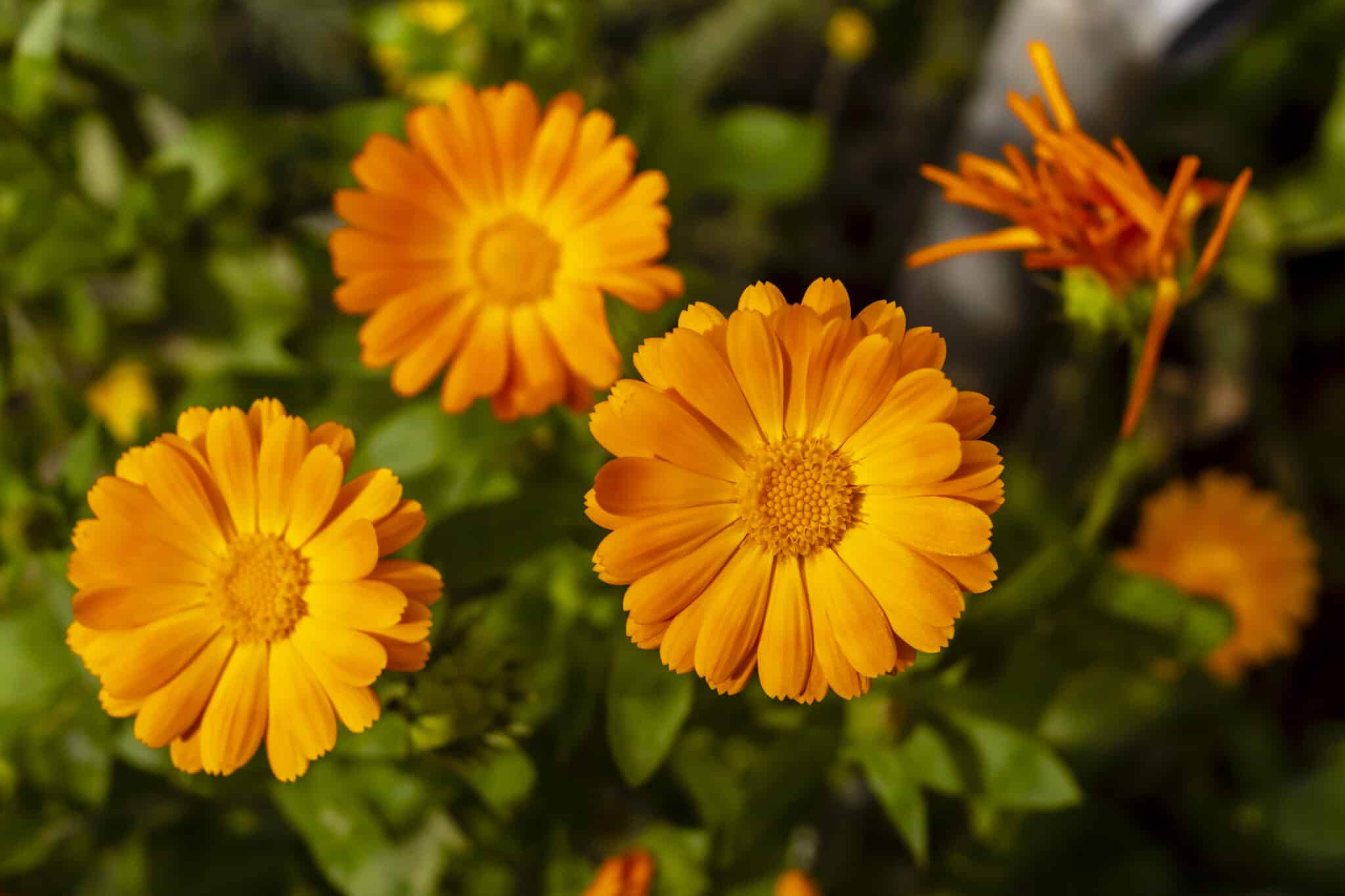
When infused with oils, calendula petals are made into healing salves to promote the healing of minor cuts, scrapes, burns, and skin irritations.
Calendula petals can also be used to make herbal teas for their potential benefits to the digestive system. It has a mildly floral and slightly bitter taste.
It’s also known as a home remedy for menstrual cramps and upset stomachs.
I love that calendula can thrive as an indoor or outdoor plant. It’s best planted in spring or fall in rich, well-draining soil. It doesn’t require too much watering, but make sure that it gets one to one-half inches of water every week in the summer.
2. Aloe Vera
Aloe vera is a medicinal plant that needs no introduction. You often see it as an active ingredient in many hair and skin care products because of its tremendous benefits.
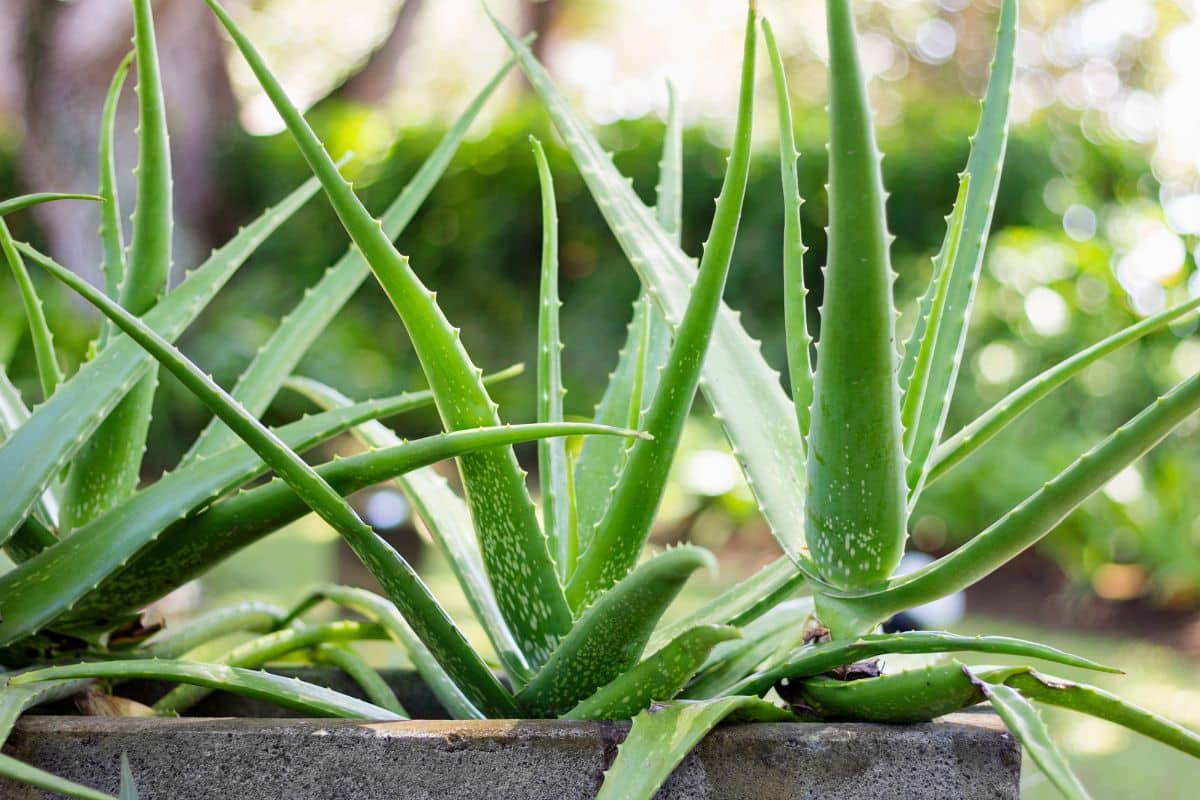
The superstar is the aloe vera gel hidden inside the thorny and thick skin of the plant. The gel is an active ingredient in products like hair conditioners, moisturizers, acne treatments, scalp treatments, cooling skin gels, and relief for minor burns and insect bites.
It works great in improving dry skin, wound healing, and managing acne and eczema. Aloe vera is also often added to food and drinks, with some evidence suggesting that it may help with digestive and dental issues.
It’s considered safe as a food additive, although many also use homemade aloe vera gel for topical applications.
When growing it at home, look for the Aloe Barbadensis Miller cultivar if you want to grow it for medicinal use. It can thrive with bright indirect sunlight in a sandy, well-draining potting mix.
Aloe vera doesn’t need much feeding and prefers dry humidity. The plant typically needs watering once a week, but when the temperature is particularly high, you may have to water it twice a week. Always check if the soil has gone dry between waterings.
3. Chamomile
Chamomile is versatile, but its flowers are popular in tea making. Its tea offers a wide range of benefits; all you have to do is infuse the flowers in hot water.
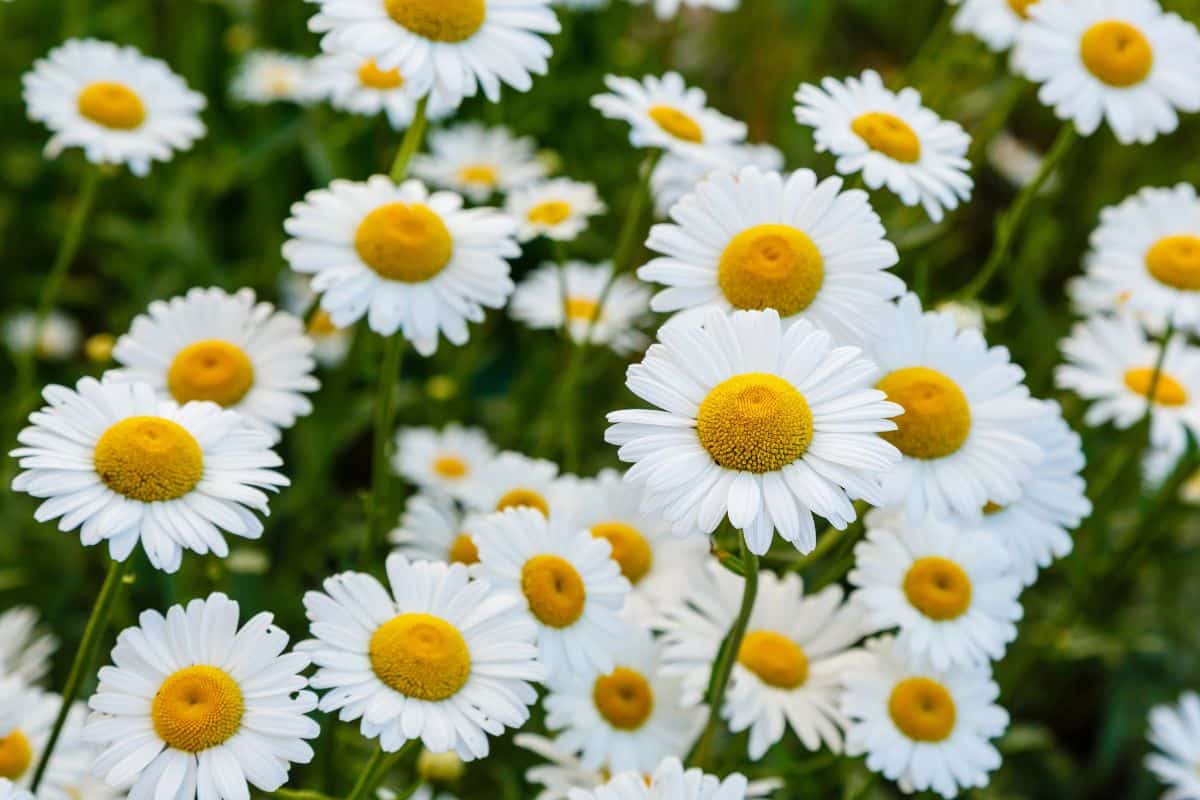
As an herbal tea, chamomile is popular for its calming and soothing properties. It is often consumed before bedtime to promote relaxation, alleviate stress, and improve sleep.
Chamomile tea has been traditionally used to ease digestive discomfort, such as indigestion, bloating, and gas. It may have mild anti-inflammatory effects on the digestive tract.
It may effectively manage menstrual symptoms and infection due to its anti-inflammatory properties. Chamomile also appears to help improve lipid and blood sugar profiles.
Meanwhile, chamomile extract is used in skincare and haircare products because of its cleansing, moisturizing, and soothing properties.
Two of the most common chamomile cultivars you can easily grow at home are German and Roman chamomile. Both will thrive in full sun but grow well even with partial sunlight daily.
Choose rich and organic soil and try to keep it at a neutral pH. Chamomile needs about an inch of water per week but lets the soil dry out between watering. Another reason chamomile is so easy to grow at home is because it doesn’t need fertilizer to thrive.
4. Lavender
With beautiful and fragrant blooms and a list of medicinal uses, you won’t need more convincing to add lavender to your houseplant collection.
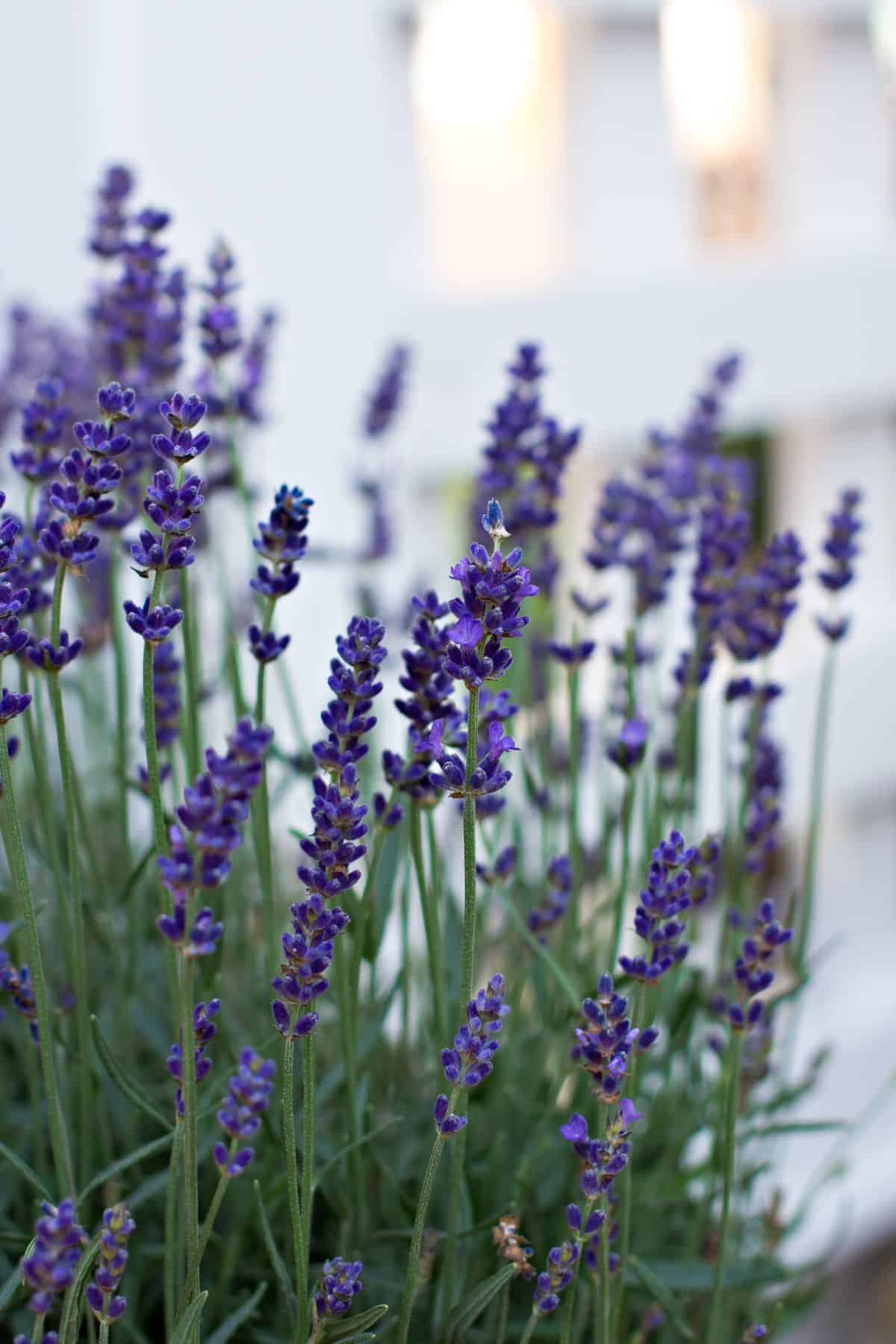
Lavender’s wide-ranging benefits have been well-documented in research, including its potential to help with sleep and manage headaches, mood problems, dry skin, and eczema. It may also aid in wound healing and help treat burns and acne.
Growing lavender indoors is easy, and they make a pretty decoration, too! It grows well when placed by the window, where it can get bright, direct sunlight for 4 to 6 hours daily.
Lavender thrives in an area with low humidity and usually needs to be watered once every 10 to 14 days when grown indoors. It’s best to give it fertilizer, especially during its bloom season in summer.
Once your lavender plants are thriving, it’s possible to harvest their flowers, leaves, and stems to make your own essential oil at home.
Lavender essential oil is commonly used for aromatherapy, but you can also use it to make homemade personal products like these Essential Oil Itch Relief Cream, DIY Poo Pourri Spray, and DIY Healing Salve!
5. Tea Tree
Tea tree, also known as Melaleuca alternifolia (not to be mistaken with tea plant or Camellia Sinensis), is another versatile medicinal plant with many amazing benefits.
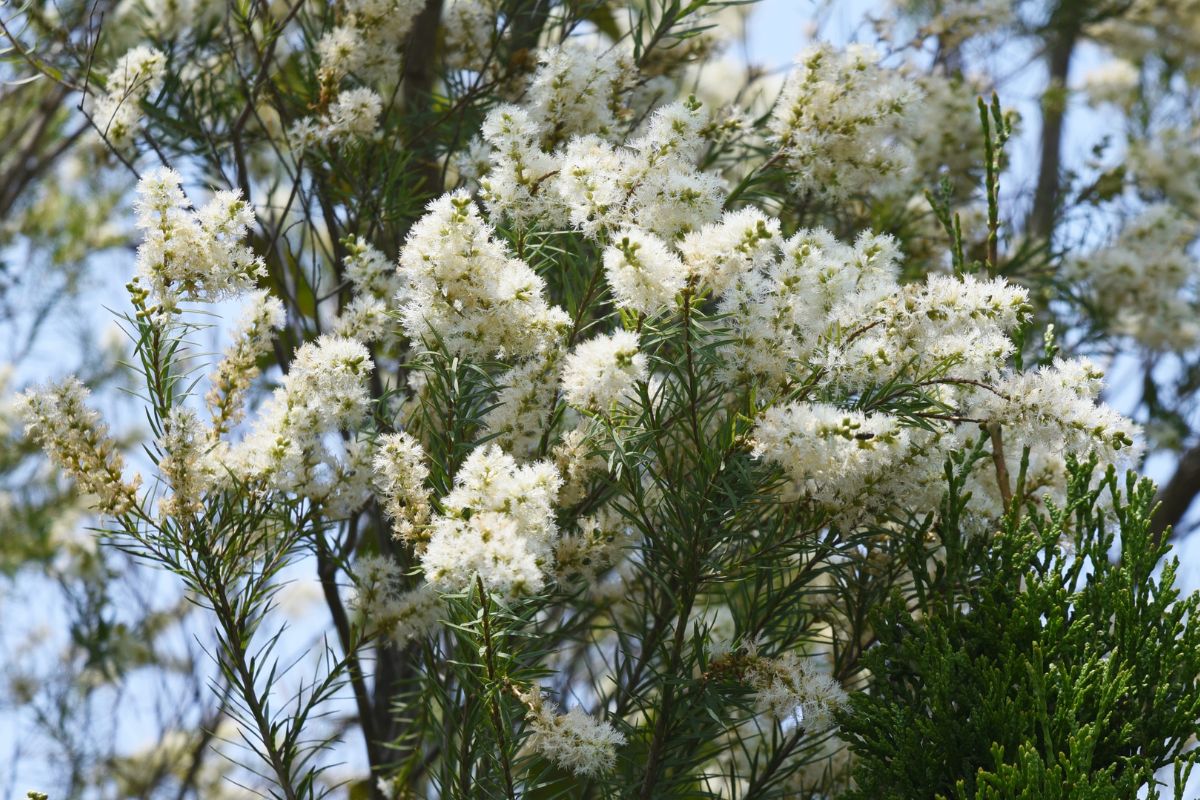
Its essential oil can be used as a main ingredient for homemade insect repellent. With antibacterial, antifungal, and antiseptic properties, tea tree oil can also treat wounds, bug bites, and athlete’s foot.
Tea tree oil is often used as an active ingredient in shampoo and conditioner because of its benefits for hair and scalp health.
You can grow tea trees in pots and planters, and it can be a lovely, fragrant indoor plant for your home. Just note that they can grow as tall as 20 feet and spread to 15 feet.
Tea tree thrives in a warm environment and loves direct sunlight. Plant it in a rich soil that retains moisture well. As for its watering needs, make sure to check the condition of the soil regularly.
6. Peppermint
Peppermint is a versatile herb because it is used in tea, essential oils, and even in cooking!
The menthol in peppermint has a soothing effect on the respiratory tract. Peppermint tea, or inhaling the vapor from peppermint oil, may help relieve symptoms of congestion and promote easier breathing.
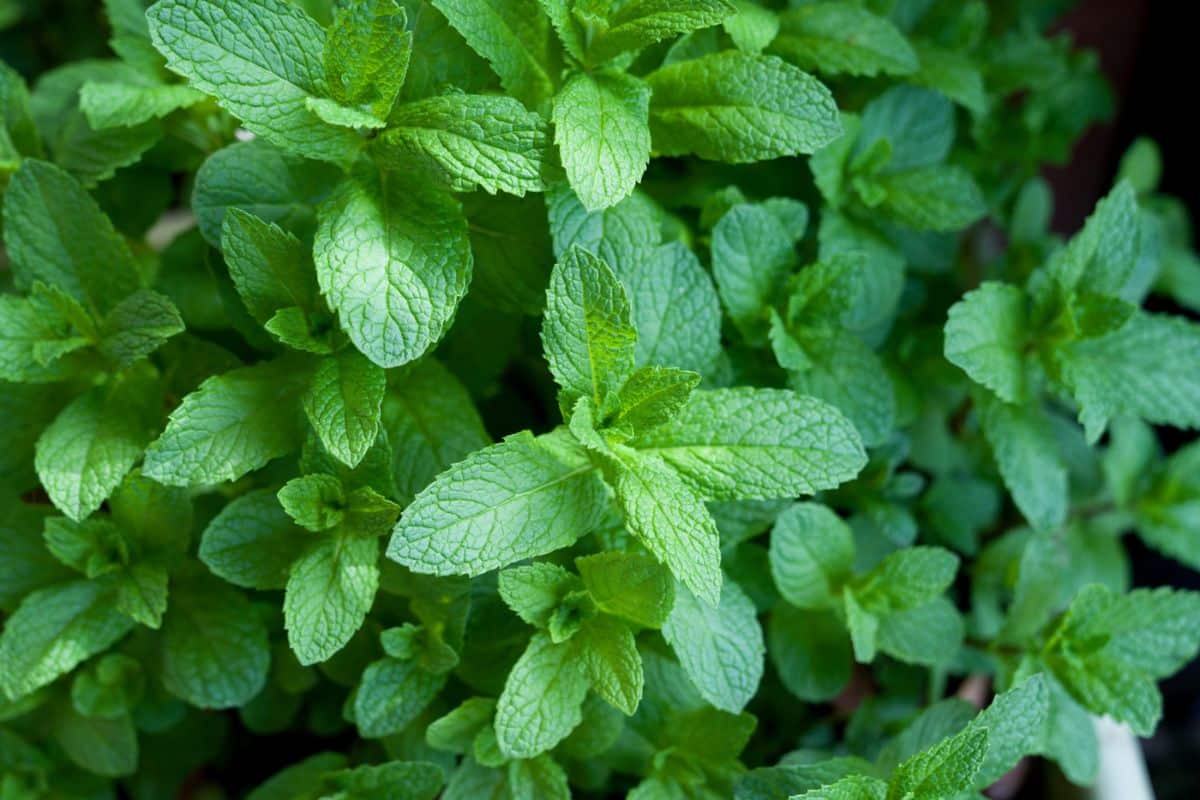
Some studies also found that peppermint oil may improve digestive issues. It may help relieve indigestion, bloating, gas, and irritable bowel syndrome (IBS) symptoms.
When applied topically or inhaled, peppermint oil may help alleviate tension headaches and migraines. The cooling sensation of menthol is believed to have a calming effect on headache symptoms.
Furthermore, peppermint oil can be diluted and applied topically as a natural analgesic. It may provide relief from muscle aches, joint pain, and minor injuries due to its cooling and anti-inflammatory properties.
Plant peppermint in a wider pot or a container with good drainage. It will need watering once a week, and make sure the soil stays moist but not soggy to avoid overwatering. As a houseplant, peppermint does not usually need fertilizer to grow.
It’s best to plant peppermint in the spring, and then it should be ready for harvest between summer and fall.
7. Tulsi or Holy Basil
An all-around herb, the holy basil or tulsi is a flowering plant with aromatic leaves native to India and is of immense significance in Hindu religious practices. You can use its leaves and oil for medicinal and therapeutic uses.
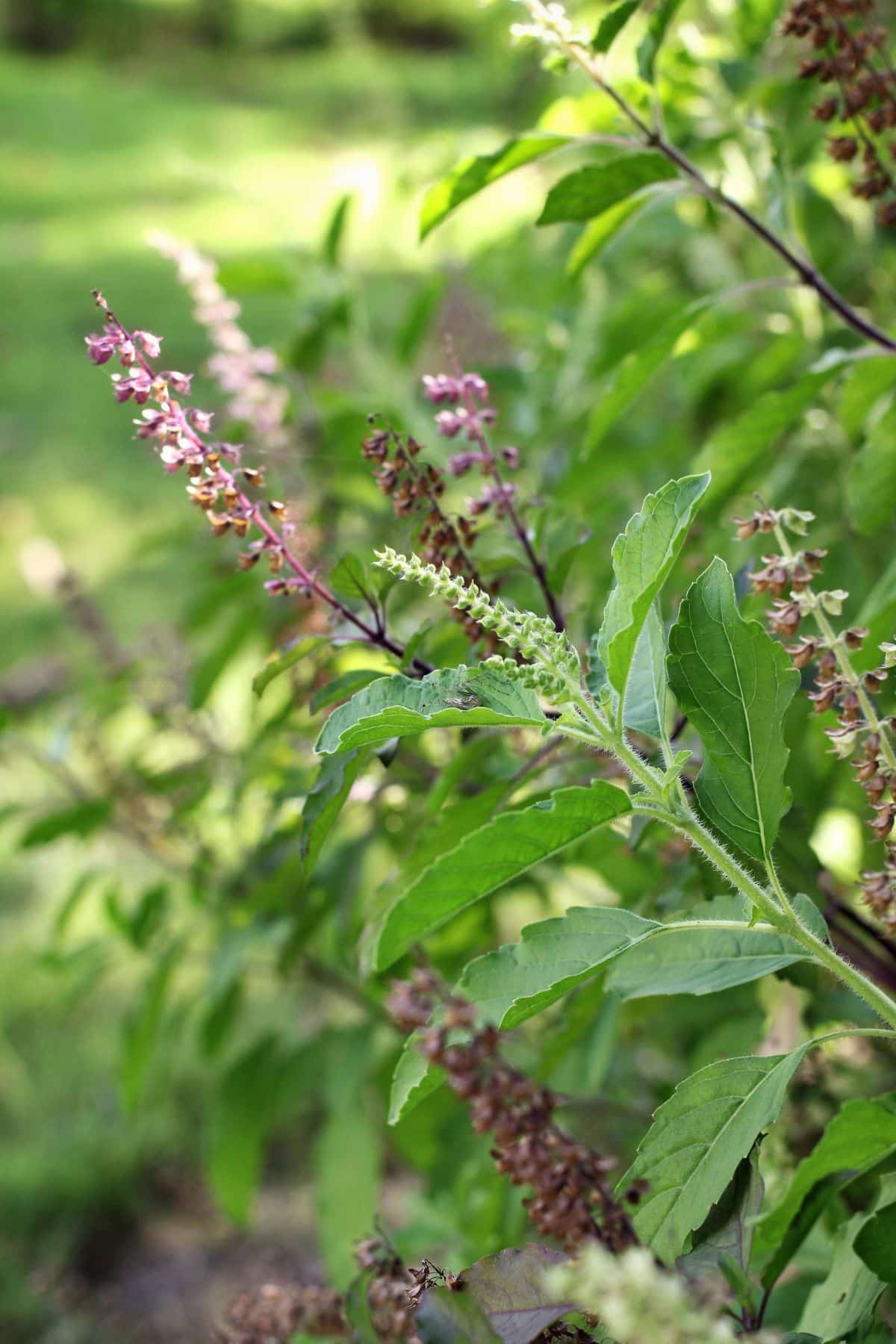
In some studies, consuming tulsi leaves improves blood sugar, blood pressure, cholesterol, and digestion. Tulsi, as an adaptogen, is also used to manage stress and restore balance in the body.
Drinking Tulsi tea may help relieve symptoms of coughs, colds, and respiratory infections due to its anti-inflammatory and antimicrobial properties. This is why it is used in skincare products that treat acne and other skin conditions.
Tulsi oil, extracted from the leaves and stems of the plant, is commonly used in aromatherapy for its calming and stress-relieving effects. It can ease muscle tension and promote relaxation when used in massage oils and balms.
It’s also relatively easier to grow at home with the right conditions. If you aim to use holy basil for home remedies, it’s best to give it full sun exposure for a few hours daily. The plant will thrive in loamy, well-draining soil with regular watering and feeding every 2 to 4 weeks.
8. Echinacea
Echinacea is a powerhouse plant because you can use its flowers, leaves, stems, and roots for medicinal and therapeutic purposes. Make a tea with these, and you can enjoy its wide array of health benefits!
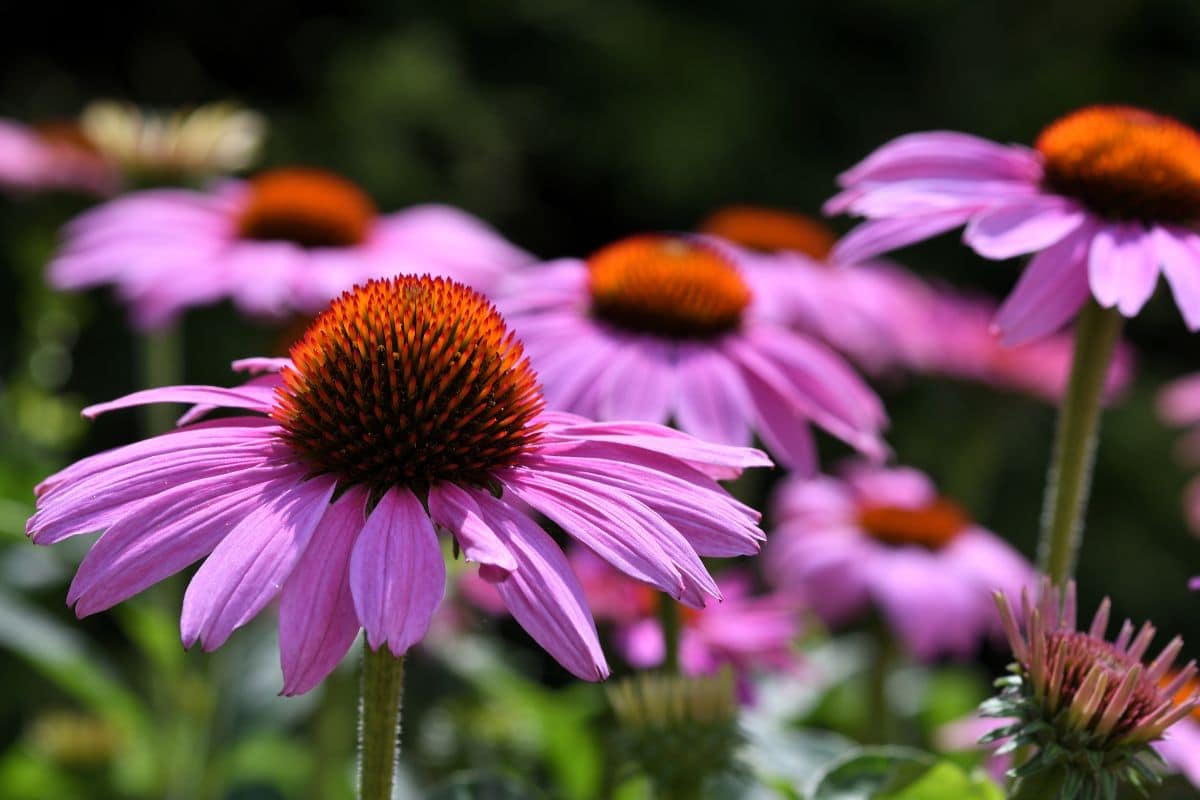
This medicinal plant is also rich in antioxidants and other components that may help boost the immune system. Its anti-inflammatory effect may also help relieve pain and manage skin issues like eczema.
Echinacea, or purple coneflowers, produce beautiful and vibrant flowers, which is unsurprising because they are related to daisies and sunflowers. So, it’s certainly one of the low-maintenance perennials you should consider adding to your home garden.
Loamy, well-draining soil works great for coneflower. It can tolerate partial shade, but the plant will thrive in full sun. Young echinacea needs more water, but once it grows deep roots, the plant is fairly drought-resistant even in its growing season.
9. Lemon Balm
You’d be surprised that using lemon balm as a medicinal plant has a long history that precedes the Middle Ages. It has been researched for its positive effects on sleep and anxiety, as well as in managing pain and inflammation.
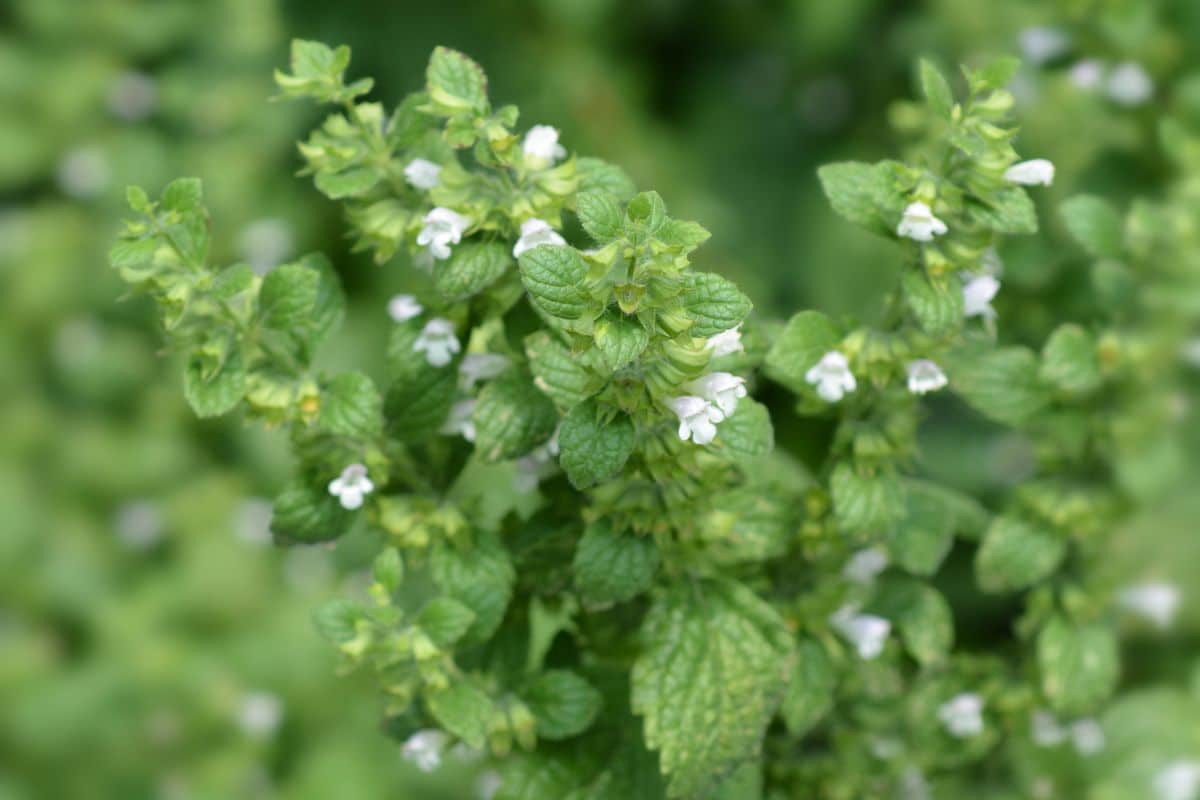
Infuse fresh or dry leaves of lemon balm in hot water to make tea. This tea is used for relaxation, stress relief, and mild digestive support. Take it before bedtime as a sleep aid.
Lemon balm essential oil can be used in aromatherapy to promote relaxation and reduce stress. Add a few drops to a diffuser, or dilute it with a carrier oil and use it for massage.
You can also create a soothing salve or balm by infusing lemon balm leaves in oil (such as olive or coconut oil) and mixing it with beeswax. This can be applied topically to soothe minor skin irritations, such as insect bites or cold sores.
Lemon balm is also very easy to plant at home. Choose a rich, well-draining soil filled with humus to improve its capacity to retain moisture.
While it needs moist soil to thrive, make sure you’re not overwatering it so you can avoid root rot. Place your lemon balm near windows where the plant can get full sunlight and light shade for a few hours.
10. Rosemary
The same herb that makes your pot roasts and meat stews aromatic and delicious has some amazing health benefits, too! It definitely deserves a spot on our list of top 10 medicinal plants.
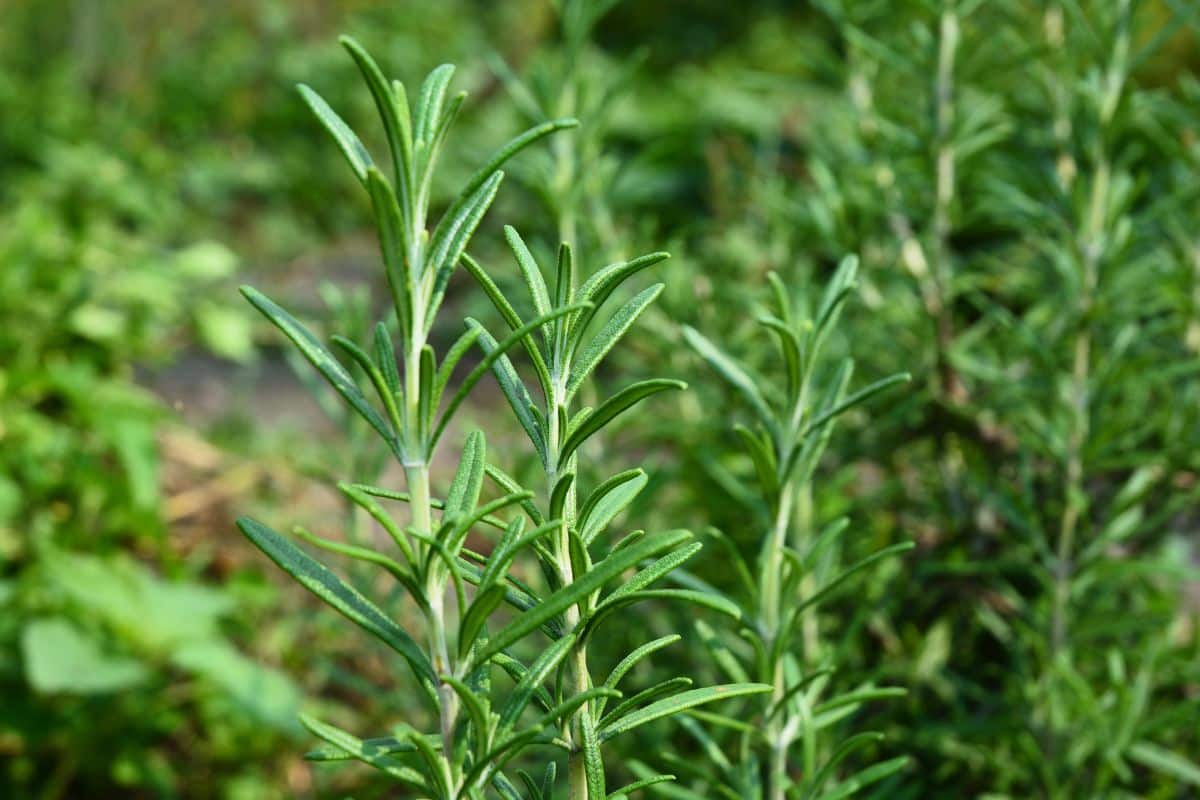
Drinking tea made with dried rosemary leaves can serve as a mild relaxant and aid digestion.
Rosemary essential oil is highly popular in aromatherapy as it promotes mental clarity and focus. When the oil is used as a bath soak, it may help soothe sore muscles and joints.
For the hair, a rosemary-infused hair rinse promotes scalp health and potentially enhances the shine of your hair. Meanwhile, a rosemary-infused oil can stimulate hair growth when massaged into the scalp.
You may want to give this homemade Rosemary Mint Shampoo a try!
This perennial plant loves direct sunlight for at least 6 hours daily. Rosemary prefers a sandy, well-draining soil. Let the soil dry a little bit in between waterings.
Choose the Best Medicinal Plants for Your Home and Health Goals!
A home garden is a beautiful feature of your home. But it can also be a very rewarding aspect when it can be a source of aromatic herbs and medicinal plants you can use to whip up home remedies for various health issues.
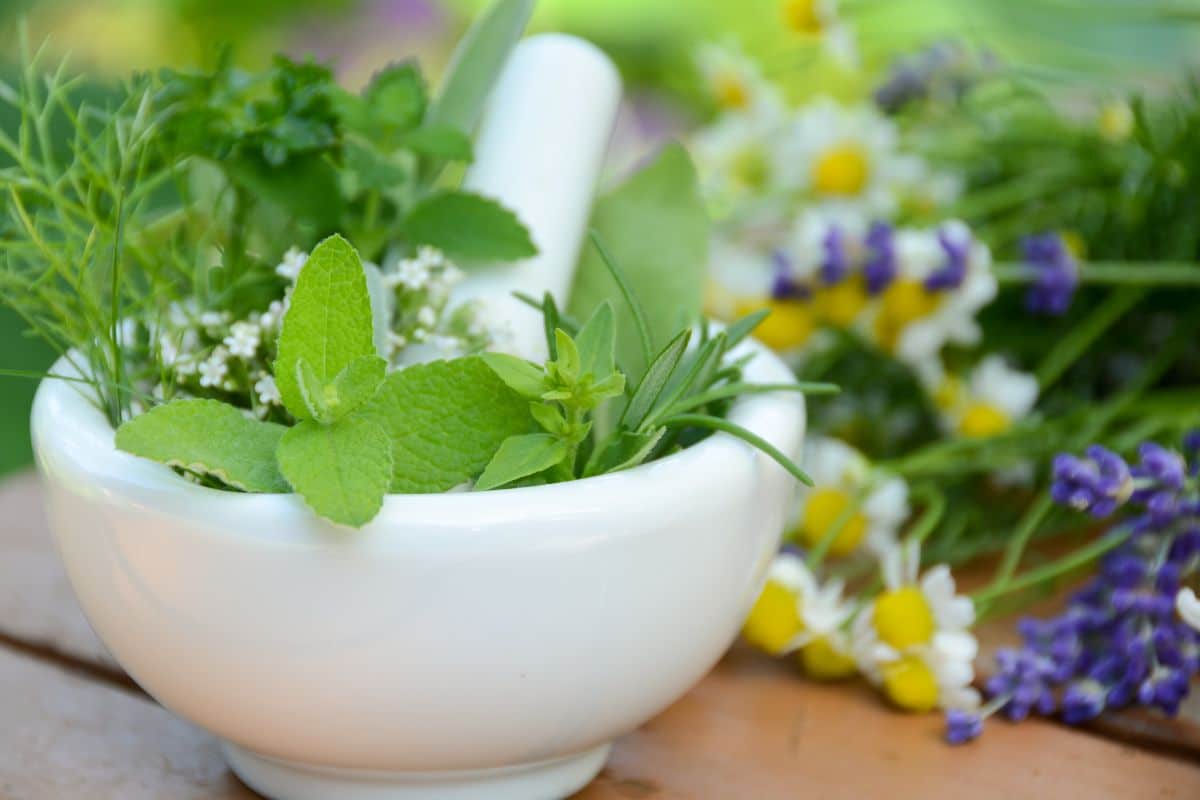
Luckily, the top 10 medicinal plants and herbs are easy to grow at home and can be handled by beginner home gardeners. And in months, you can have an array of aromatic herbs and plants for cooking, tea, and infused oils.

